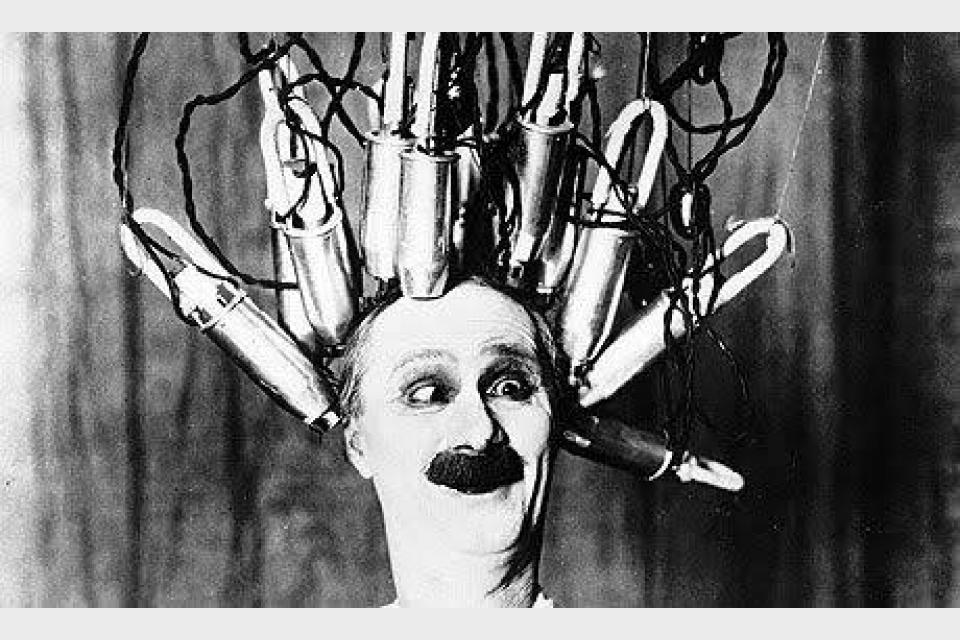The term “mad scientist” conjures up images of dangerous experiments and frenzied surgeries. It also denotes a time period when science was still in its infancy, thereby excusing much of the risky behavior on display. But the truth about real-life mad scientists is far more disturbing — especially since many of them were active well into the 20th century.
From the brutal warfare research conducted by Imperial Japan to the creation of a two-headed dog by Soviet scientists, these projects saw countless innocents mutilated, traumatized, or even killed. Perhaps most disturbing of all is that many of these efforts yielded nothing of value — and were merely undertaken to see if they were possible.
Vladimir Demikhov: The Mad Scientist Who Created A Two-Headed Dog

Vladimir Demikhov feeding a two-headed dog with his assistant Maria Tretekova.
A famous Soviet scientist, Vladimir Demikhov was known for being a pioneer in organ transplantation. He saw much success in transplanting a number of vital organs between dogs. But then in the 1950s, he decided to take things one step further — by creating a two-headed dog.
Demikhov and his assistants attempted the operation at least 24 times. The 24th attempt was the most widely publicized — and it was even featured in LIFE Magazine. Unsurprisingly, the ghastly creation was horrific to behold.
Fusing the head and neck of a small dog named Shavka onto the neck of a large stray German Shepherd named Brodyaga, the mad scientist created a starkly unnatural symbiote at a disturbing cost.
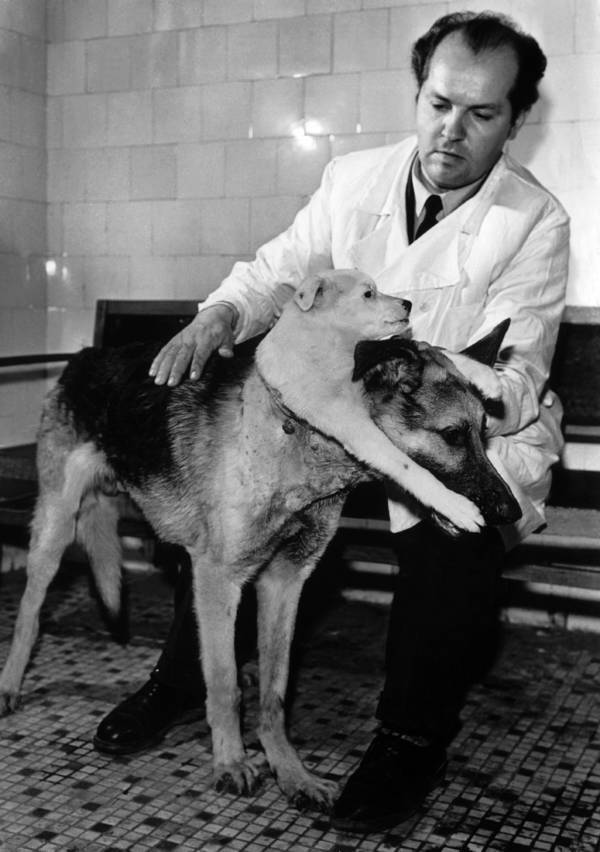
The mad scientist and his two-headed dog.
For the surgery itself, Demikhov amputated Shavka’s lower body below the forelegs, keeping her heart and lungs connected until just before the transplant. Then, he attached Shavka’s upper body to a corresponding incision in Brodyaga’s neck. The operation lasted three and a half hours.
While both of the mutilated dogs were still able to hear, see, smell, and swallow, the surgery was far from a triumph. For instance, while Shavka could drink liquids, she was not connected to Brodyaga’s stomach. So, whatever she consumed simply flowed through an external tube that Demikhov had implanted and dripped onto the floor below.
Tragically, both dogs died four days after the surgery due to the damage of a crucial vein. While a previous pair of dogs that had undergone the same experiment lived for about a month, they too suffered an agonizing end.
To make a horrific experiment even worse, Demikhov had no apparent end goal with this project — save for seeing if he could succeed.
Shiro Ishii: The Barbaric Doctor Behind Unit 731 In World War II Japan

Shiro Ishii led horrific experiments leading up to and during World War II.
Often compared to the infamous Nazi doctor Josef Mengele, Shiro Ishii oversaw countless horrific human experiments in World War II Japan.
Ishii had been a member of Imperial Japan’s Army Medical Corps when he was first inspired to pursue appalling methods of germ warfare, which the Geneva Protocol had banned in 1925. As an esteemed general and scientist with all the right credentials, Ishii eventually took over Unit 731 — the government’s disturbing biological and chemical warfare unit.
Believed to have been set up around 1935 in the Japanese puppet state of Manchukuo, Unit 731 became the testing grounds of some of the most inhumane experiments in modern history. Ishii insisted that the only way they’d make scientific progress was by using civilians as test subjects.
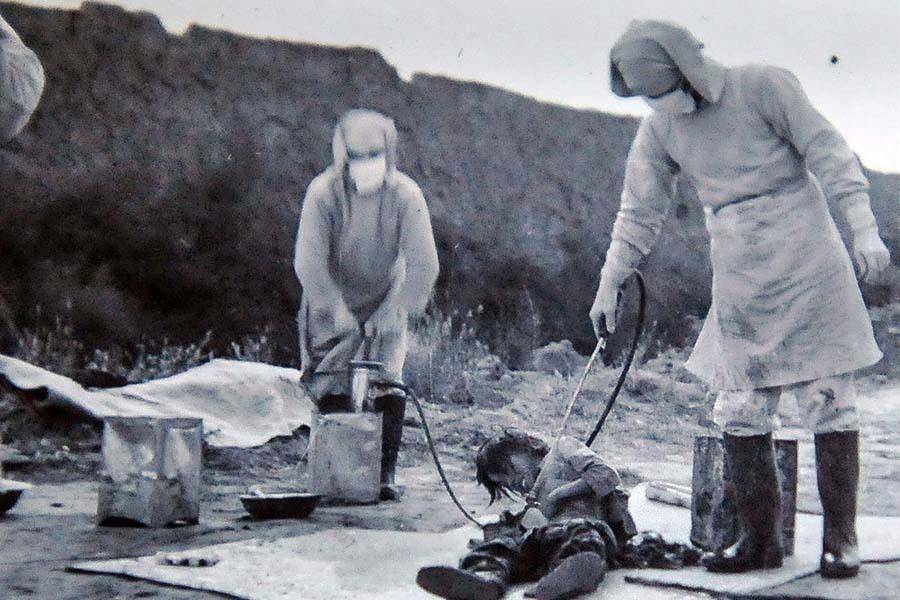
A bacteriological trial being conducted on a young captive in November 1940.
From frostbite experiments and high-pressure chamber tests to intentional infection of syphilis and vivisections on conscious subjects, Ishii’s experiments were all heralded as necessary acts to bolster the army and pinpoint any potential weaknesses in its enemies.
Not even unborn children were spared. Female prisoners were often raped and forcibly impregnated. The victim would then be exposed to chemicals, purposefully infected with diseases, or fatally shot, only for scientists to cut the woman open and assess the state of the fetus inside.
Meanwhile, the “Maruta” division infected thousands of subjects with various diseases and removed the victims’ organs just to study the effects of each illness without the hassle of decomposition. Arms were amputated and reattached to opposite sides, gangrene was intentionally induced in healthy body parts, and bare hands were subjected to frostbite.
Perhaps most horrific was Ishii’s inhumane reasoning behind these tests. As an army doctor, one of his main goals was the development of battlefield treatment techniques that he could use on Japanese troops — after learning just how much the human body could handle before it collapsed.
Robert Liston: The Reckless Surgeon Who Killed His Patient And Two Bystanders
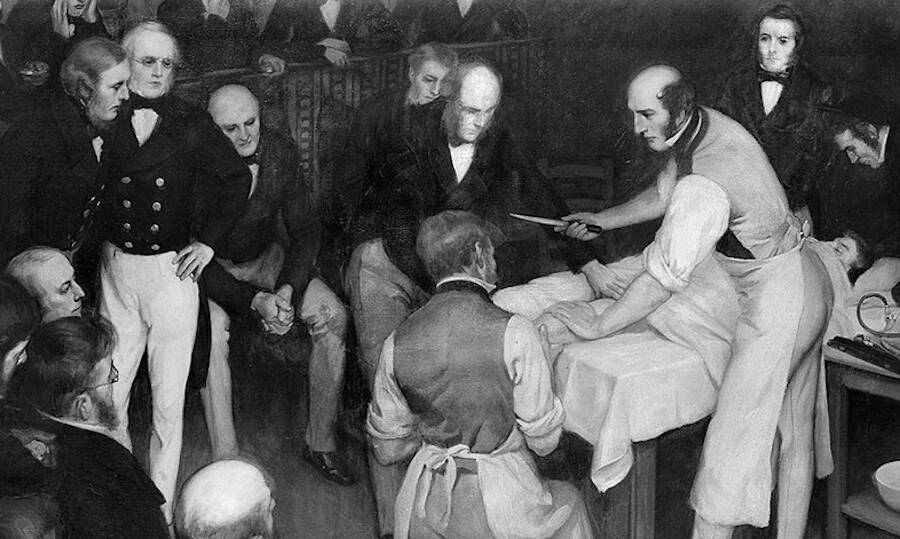 Known as the “fastest knife on West End,” Dr. Robert Liston drew massive crowds during his surgeries.
Known as the “fastest knife on West End,” Dr. Robert Liston drew massive crowds during his surgeries.
As far as surgeons go, Robert Liston was the fastest of his time. It was an imperative part of the process during the early 19th century, as anesthesia had yet to be developed. Unfortunately, being fast inherently turned precision into an afterthought — with grisly consequences.
Born and educated in Scotland, Liston’s passion and enthusiasm for anatomy saw him become “the fastest knife on West End.” He was particularly skilled at performing amputations and could complete the entire process of slicing and suturing in less than three minutes, losing only one in 10 patients at a time when one in four was standard.
In terms of mad scientists, Liston was no barbarian with maniacal needs for experimentation. Ultimately, the only harrowing thing about him was how gleeful he appeared while cutting off people’s limbs. He once removed a leg in a mere 28 seconds and coined a prideful catchphrase — “Time me, gentlemen!” — while demonstrating amputations before his peers.
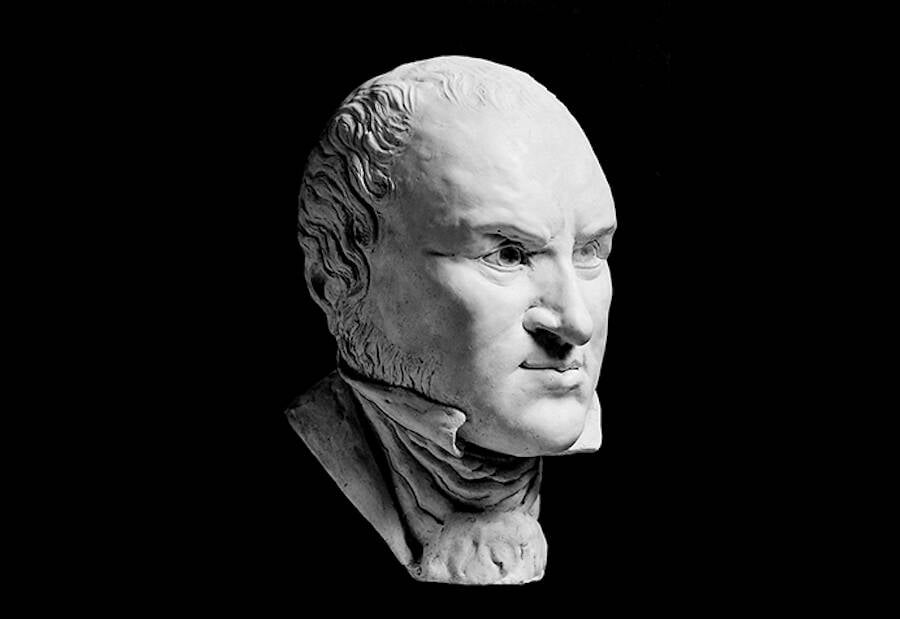
A marble bust of Liston, sculpted in his honor.
Unfortunately, his pride often caused his patients to suffer needlessly. Liston once broke his own speed record during a leg amputation but severed the subject’s testicles in his rush to get it done. He also mistook a lump in a child’s throat for a skin tag and chopped it off — only realizing once the boy had died that it was an aneurysm of his carotid artery.
Perhaps most infamously, Liston made history by performing the only surgery on record with a 300 percent mortality rate. Liston was so focused on his speed during the amputation in question that he accidentally cut off the fingers of his assistant along with the patient’s leg.
And when he swung the knife back up, he accidentally slashed into the coattails of a spectator, who fainted on the spot. It was later revealed that the spectator had died of shock, and the patient and assistant also died after their wounds got infected — meaning there were three deaths total.
Ultimately, Liston’s madness appeared to have been a product of his time. Determined to provide his patients with as few seconds of pain as possible, he largely prioritized speed over care — with a few victims left in his wake that might have survived with just a few more moments of discomfort.
Jack Parsons: The Deviant Occultist Who Helped Create Rocket Science
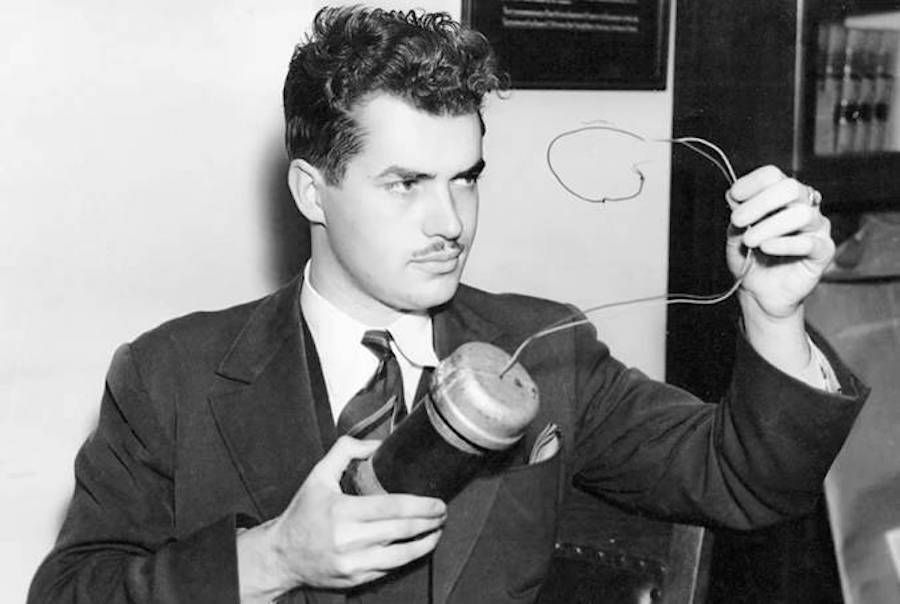
Jack Parsons was so involved in the occult that the FBI kept rigorous tabs on him.
The litany of bizarre descriptions for Jack Parsons never quite seemed to end. Though he was known as an occultist and a sex fanatic, the California-born eccentric also oversaw the founding of NASA’s Jet Propulsion Laboratory — and quite literally helped invent rocket science.
Parsons was an unusual mad scientist as his expertise was only matched by his obsession with the occult and dark magic. He pioneered rocketry at a time when sending a man to space seemed like a pipe dream and began that effort with a group of friends at the California Institute of Technology — who called themselves the “Suicide Squad.”
He joined the group after befriending a graduate student named Frank Malina. Though Parsons never pursued any higher education himself, his new friends helped him shoot off primitive rockets in the late 1930s, hopeful to one day lead humankind to the moon.
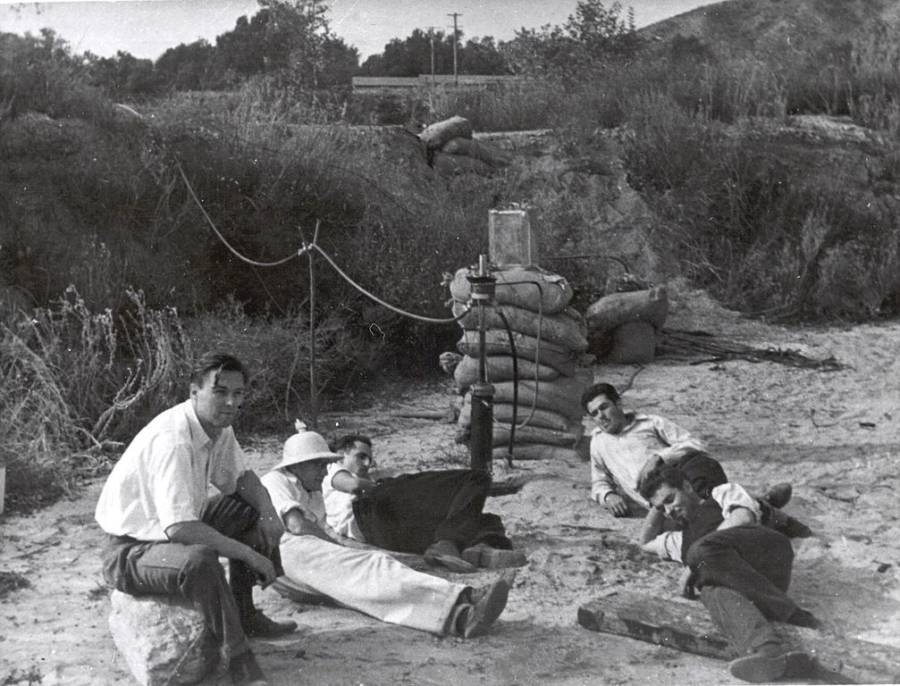 Jack Parsons (right) with his fellow “Suicide Squad” members, including Frank Malina (center).
Jack Parsons (right) with his fellow “Suicide Squad” members, including Frank Malina (center).
Parsons was so adept at making rocket fuel that versions of his mixture would later be used by NASA. With Parsons’ help, Malina garnered funds from the National Academy of Sciences to study “jet propulsion” in the early 1940s — but Parsons’ eccentricities soon got in the way.
Perhaps most controversially, Parsons was a member of the Ordo Templi Orientis (OTO), which was led by Aleister Crowley. Known as “the wickedest man in the world,” Crowley’s primary instruction was a hedonistic “do what thou wilt,” which primarily involved seeking out pleasure at all costs.
A devout apprentice of Crowley’s, Parsons was soon made the leader of the OTO’s West Coast chapter, often corresponding directly with Crowley himself. Meanwhile, Parsons used his hard-earned income from his rocketry work to purchase a mansion in Los Angeles that mostly served as a hotbed of orgies — where Parsons once slept with his wife’s 17-year-old sister.
Due to Parsons’ controversial actions outside of work, he was eventually cast out of the industry he helped create — at the behest of the FBI. Around this same time, Parsons would meet none other than the future Scientology founder L. Ron Hubbard, who ended up stealing one of his girlfriends.
Ultimately, this mad scientist went out in a fiery blaze while working on a film project — and died in one of his own explosions. He was 37 years old.
Giovanni Aldini: The Mad Scientist Who Helped Inspire “Frankenstein”
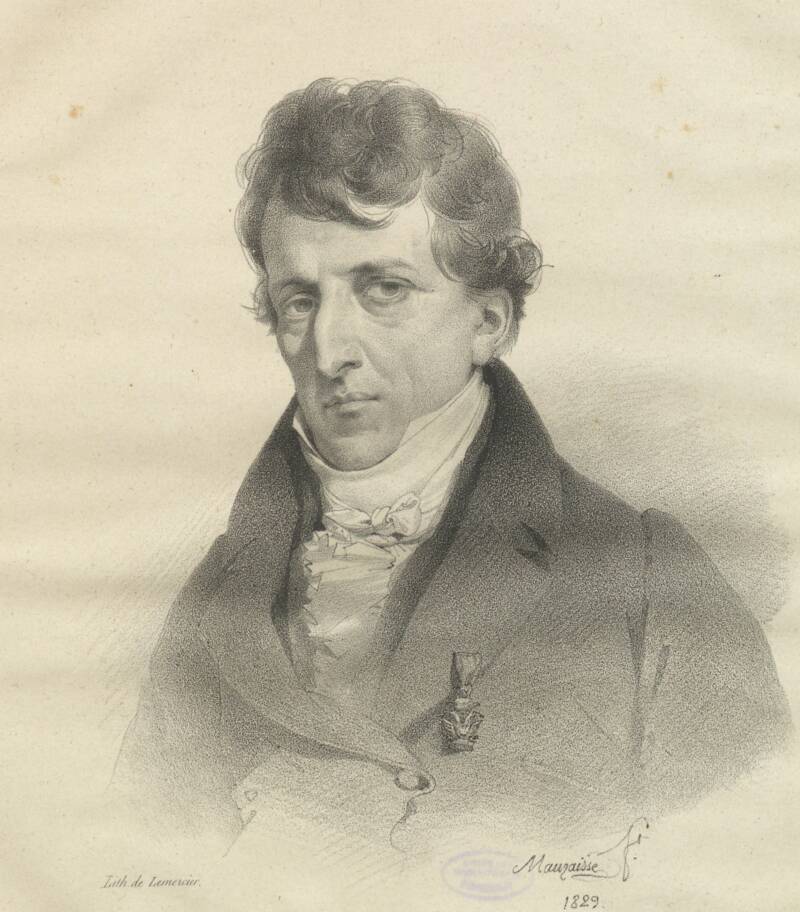
Giovanni Aldini believed that electrical currents might help revive the dead.
Giovanni Aldini was considered fairly ingenious for the early 1800s. Known for experimenting on the dead, he found that a subject’s face contorted after he swabbed the subject’s ears with saltwater, attached metal wiring to each ear, and then connected that wiring to a battery.
It was remarkable for the era, especially since the subject was long dead, and there was only a head that was on display — with no body attached.
In his youth, the future physician had watched his uncle perform odd experiments. A doctor himself, Luigi Galvani had noted that electrical currents placed on dead frogs made them move and thought that this same method might work to raise humans from the dead. Naturally, his nephew never forgot this — and then tried to do just that as an adult.
Growing up in Bologna, Italy, Giovanni Aldini initially spent his time on frogs like his uncle. He studied medicine at the University of Bologna, with his research expanding to larger animals like sheep and cows. Eventually veering into the realm of a mad scientist, he finally tried to reanimate a person.
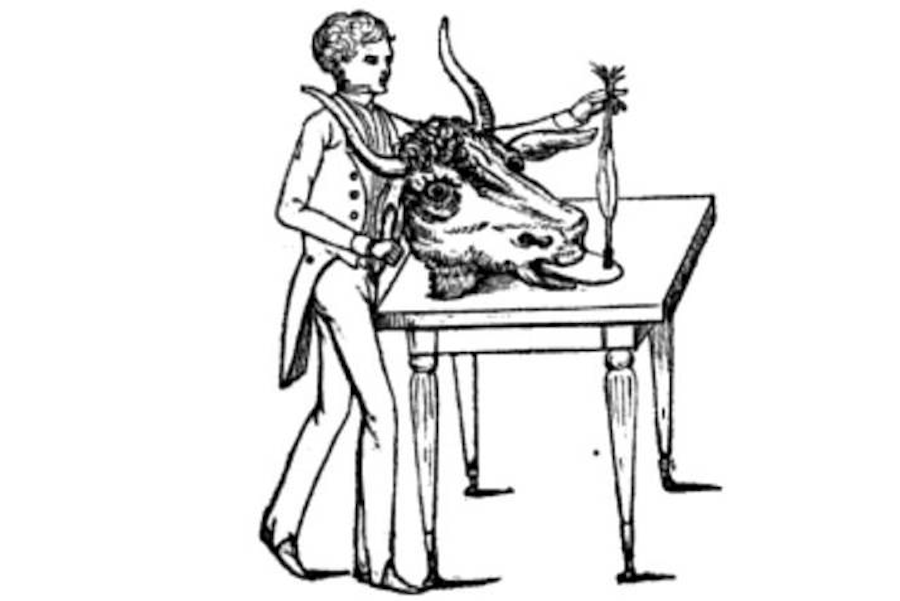
An illustration of Giovanni Aldini performing experiments on an oxen.
Aldini had already succeeded at getting dead animals to move around, roll their eyeballs, and wag their tongues by applying electrical impulses to the corpses using a battery. He was now determined to try as much on a human being — by borrowing a fresh body from the local executioner.
But he soon realized an issue: Italy was executing prisoners by beheading them, which meant that the bodies were often drained of blood and thus emptied of any pathways for electricity to travel through. Aldini thus took to England, where prisoners were sent to the gallows, and ordered one newly hanged criminal to be delivered to the Royal College of Surgeons.
Attaching his probes to the corpse of a man named George Foster, Aldini became mad scientist incarnate when he got Foster to open his left eye, shake his jaw, and seemingly take a breath. The doctor considered his experiment a failure because Foster didn’t rise from the dead. But in 19th-century Italy, this was an utterly miraculous feat to Aldini’s peers.
Perhaps most astounding is that news of this macabre experimentation reached the ears of a young girl named Mary Shelley — who would be so entranced by the tale that it helped inspire her book Frankenstein.
Andrew Ure: The Mad Scientist Who Followed In Aldini’s Footsteps

Andrew Ure, like Giovanni Aldini, was determined to raise the dead.
On the subject of real Frankenstein experiments, Scotsman Andrew Ure was another mad scientist who tried to raise the dead. Born in Glasgow in 1778, Ure studied at universities in Glasgow and Edinburgh before becoming a Professor of Natural Philosophy at Anderson’s Institution.
Ure was a popular lecturer on chemistry and mechanics and drew large crowds of enthusiastic spectators. And as he built up a reputation for himself, he explored a multitude of subjects.
He published a dictionary of chemistry, studied geology, became the director of the Garnethill Observatory, and helped found the Pharmaceutical Society. But his most infamous field of study was publicized in 1818 — around the same time that Frankenstein was first published.
That December, Ure announced that he had been experimenting on the dead — specifically on a convicted murderer named Matthew Clydesdale, who had recently been executed. Ure sincerely believed that using electrical currents to stimulate his phrenic nerve could bring him back to life.
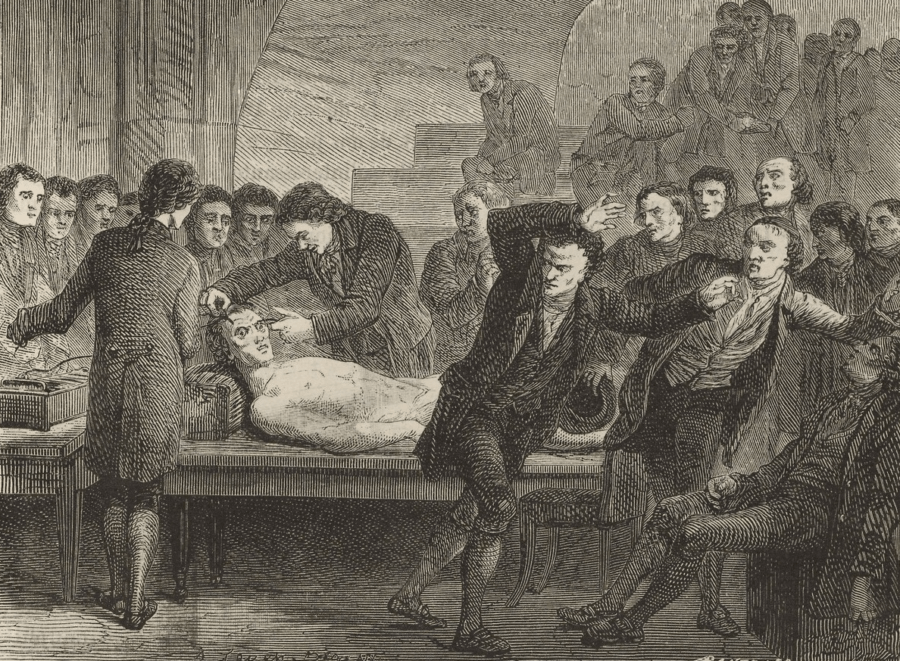
An 1867 engraving of Andrew Ure experimenting on a dead convicted murderer.
The mad scientist was naturally mistaken, but he persisted with his work. With around 300 crimes in Britain carrying the death penalty at the time, Ure had no problem finding dead bodies to do his research.
Likewise, there was no shortage of overly enthusiastic audiences to watch him in his attempts, which practically revolved around Ure shocking disparate parts of the body to make them move. While Ure wasn’t actually able to bring a dead man back to life, he did leave quite an impression on the horrified audience who had come to see his experiment in person.
“When the supraorbital nerve was excited every muscle in his countenance was simultaneously thrown into fearful action; rage, horror, despair, anguish, and ghastly smiles, united their hideous expressions in the murderer’s face, surpassing far the wildest representations of Fuseli or a Kean,” Ure wrote. “At this period several of the spectators were forced to leave the apartment from terror or sickness, and one gentleman fainted.”
Ultimately, Christianity had such a grip on polite society during this time that local churches demanded Ure cease his activities at once. Ure reluctantly agreed. But in the end, he didn’t mind much. He spent most of his later years focusing on other fields of study, like revolutionizing the way volumes were measured and developing a working thermostat.
Robert Nelson: The Mad Scientist Who Helped Pioneer Cryonics
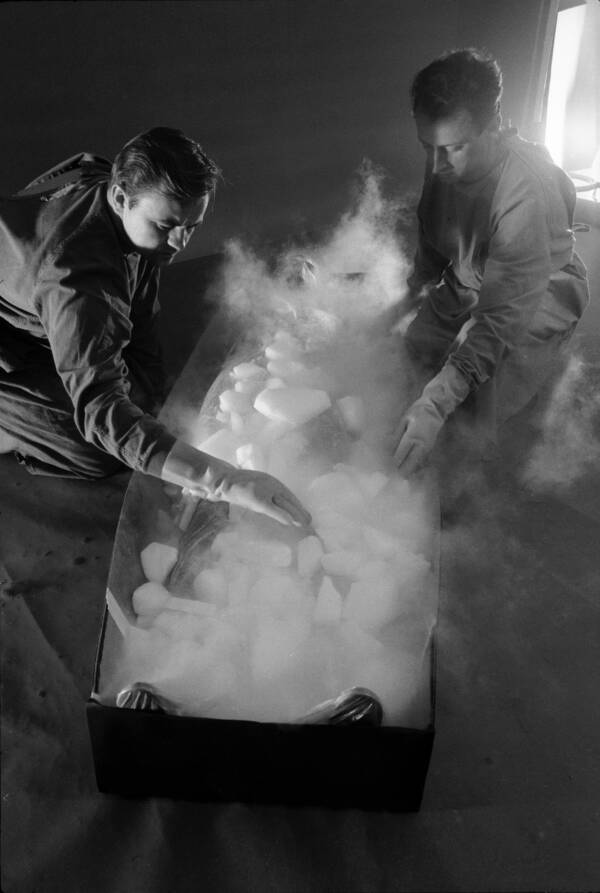
J. R. Eyerman/The LIFE
Robert Nelson (left) and biophysicist Dr. Dante Brunol cryonically freezing a participant in 1967.
Robert Nelson had no professional background or even a college degree, but nonetheless pursued his passion — cryonically freezing human beings after their death in the hopes of reviving them in the future. Born in Boston in 1936, Nelson would later plan and execute his own “cryonics” program.
Despite being a high school dropout, Nelson practically spearheaded the nascent movement by freezing his first subject in 1967. It had been a truly baffling feat for the former television repairman, who had been inspired by Dr. Robert Ettinger’s 1962 book The Prospect of Immortality.
Ettinger posited that death was merely a disease, and thus had a cure. Nelson decided to test that theory out for himself when he became president of the Cryonics Society of California in 1962 and then became president of his local Life Extension Society in Los Angeles in 1966. And before long, Nelson soon found his first volunteer.

Alcor Life Extension Foundation
Nelson preparing a dead Dr. James Bedford for cryonic life extension.
Dr. James Bedford was 73 years old and wanted to try extending his life via cryonics. Dying of kidney cancer, he agreed to let Nelson and his team put him on ice after he died. But the ramshackle crew was so unprepared that they initially used ice that was collected from local freezers.
Nelson then drove Bedford’s dead body from his house to the home of a friend before injecting him with antifreeze and pumping oxygen into his system with a machine called an iron heart. Then, he entombed him in a capsule filled with dry ice. In 1970, Nelson finally bought a vault to store Bedford and other volunteers who wanted to be cryonically frozen.
Underground in the Oakwood Memorial Park Cemetery in Chatsworth outside Los Angeles, the location became Bedford’s new resting place and soon held the body of the group’s first female subject, Marie Phelps-Sweet, and an eight-year-old girl who had died of cancer. Ultimately, a lack of resources and actual expertise saw the project shuttered in 1979.
The vault itself was eventually covered up with turf — with relatives of the deceased suing Nelson and his partner for $800,000. He later settled.
As for the frozen Bedford, his body was moved several times before being rehoused by the Alcor Life Extension Foundation in 1991. When he was first removed from Nelson’s care, he was reportedly found to be a “well-developed, well-nourished male who appears younger than his 73 years.”
The Alcor facility in California currently holds 184 frozen corpses, or “patients,” as they like to call them.
Years later, Nelson reflected on his experience as a former mad scientist: “It was crazy. I look back at it now, and I think, ‘Oh my God.'”

